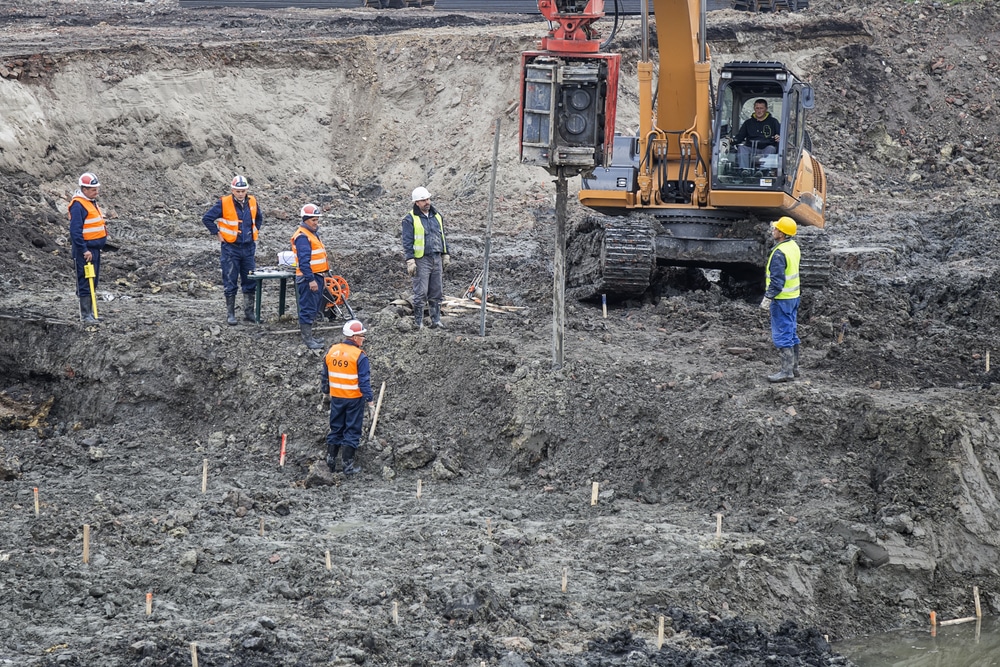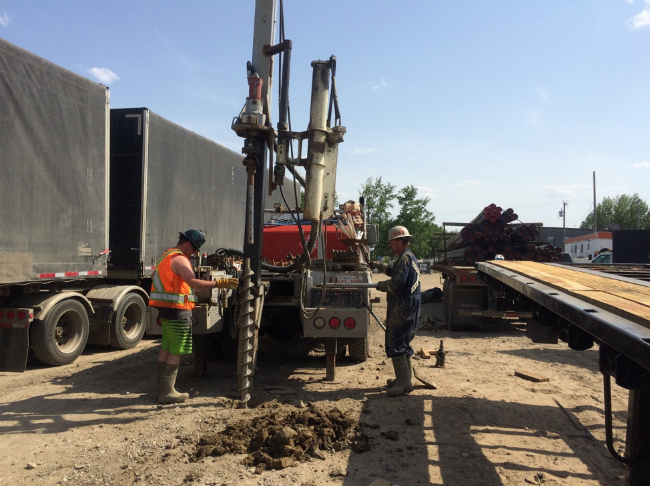Geotechnical Engineer Description: What to Expect from These Experts
Geotechnical Engineer Description: What to Expect from These Experts
Blog Article
Examining the Interdisciplinary Nature of Geotechnical Engineering and Its Influence on Ground Enhancement and Foundation Design
The interdisciplinary nature of geotechnical design plays a crucial function fit cutting-edge ground renovation techniques and foundation layout techniques. By incorporating insights from structural, environmental, and geological disciplines, geotechnical designers are equipped to address intricate dirt habits and site-specific difficulties. This collective strategy not just boosts the efficacy of strategies such as soil stabilization and dynamic compaction yet likewise guarantees that projects follow sustainability concepts. What ramifications does this interdisciplinary synergy have for future developments in the area, especially in the context of arising construction innovations?
Overview of Geotechnical Design
Geotechnical engineering is an important branch of civil design that concentrates on the behavior of planet products and their interaction with structures. This self-control incorporates the research study of dirt, rock, and groundwater, intending to understand their residential or commercial properties and how they influence the performance of civil design jobs. Geotechnical designers analyze the hydraulic and mechanical habits of these materials to guarantee the security and safety of structures such as structures, bridges, and maintaining wall surfaces.
The extent of geotechnical engineering consists of site investigations, dirt tasting, and screening, as well as analysis of dirt mechanics and rock auto mechanics. Engineers utilize advanced techniques to assess ground problems, recognize potential threats, and design reliable ground renovation remedies. This might involve approaches such as soil stablizing, grouting, and making use of geosynthetics, which enhance the stamina and toughness of the ground.
In addition, geotechnical engineering plays a crucial role in foundation layout, figuring out appropriate foundation kinds based on soil attributes and loading conditions. By including rigorous screening and evaluation, geotechnical designers add considerably to the sustainability and strength of facilities, ensuring that structures can stand up to functional and ecological tensions gradually.
Key Interdisciplinary Relationships

Additionally, environmental design plays a crucial role in evaluating the influence of geotechnical tasks on the surrounding environment. This collaboration is crucial for creating lasting methods that decrease ecological degradation throughout excavation or ground renovation procedures.
In addition, the integration of geotechnical engineering with geology enhances the understanding of subsurface conditions, helping with more precise site characterizations (geotechnical companies in south africa). This partnership aids in danger analysis, particularly in locations prone to landslides or seismic activity, therefore educating risk mitigation methods
Finally, improvements in innovation have actually caused interdisciplinary collaboration with information scientific research and geoinformatics. These areas add to improved modeling and analysis techniques, allowing for more specific forecasts of soil actions under various conditions. Hence, the interconnectedness of these techniques enhances geotechnical engineering, advertising technology and effectiveness in foundation design and ground enhancement.
Ground Improvement Methods
Ground renovation methods are vital approaches employed to improve the engineering properties of dirt, thus enhancing its load-bearing capacity and security. These techniques are especially crucial in locations where all-natural dirt problems are inadequate for sustaining architectural tons or where ecological aspects might compromise soil honesty.
Typical ground renovation approaches include soil compaction, which increases density and decreases void rooms, and grouting, which entails injecting materials right into dirt to load gaps and bind bits with each other - geotechnical specialist. Various other techniques include the installment of soil nails and anchors, which give added assistance, and making use of geosynthetics to reinforce dirt structures. Deep mixing methods, such as soil-cement columns, can also considerably improve the toughness and stiffness of weak dirts
Furthermore, vibrant compaction and vibro-replacement methods are typically employed to improve dirt properties in situ. These techniques can mitigate problems connected to negotiation and liquefaction, especially in seismic locations. By using a combination of these innovative techniques, geotechnical designers can efficiently deal with site-specific obstacles, guaranteeing that the foundation systems will execute appropriately under prepared for loading problems, More Info thus adding to general job success.
Foundation Layout Factors To Consider
Effective structure layout factors to consider are critical for the long life and security of frameworks. A well-designed structure needs to sufficiently sustain the tons of the building while suiting soil problems, environmental aspects, and potential modifications over time. Trick variables consist of soil bearing capacity, settlement qualities, and groundwater problems.
Understanding the dirt profile via geotechnical investigations is essential, as it notifies the choice of foundation type-- be it you could look here superficial, deep, or specialized approaches such as stack foundations or mat foundations. The expected lots, including online, dead, and environmental lots, need to be properly computed to make sure the foundation can withstand potential failure mechanisms, such as gliding, reversing, or extreme settlement.
Additionally, factors to consider for frost deepness, seismic task, and potential dirt liquefaction in seismic areas are crucial. Additionally, drain and moisture control have to be incorporated right into the structure layout to reduce issues connected to hydrostatic pressure and dirt erosion.
Partnership among engineers, engineers, and geotechnical specialists is essential to create a comprehensive structure design that not only fulfills governing demands however additionally makes sure the long-lasting efficiency and safety of the framework. Eventually, thorough planning and cutting-edge options are essential to deal with the intricacies inherent in structure style.
Study and Ideal Practices

One notable instance study involves the usage of deep soil blending in a skyscraper structure job in a seismic area. This method substantially enhanced the soil's stamina and security, enabling a much safer and much more efficient structure system (geotechnical specialist). The job highlighted the importance of picking ideal ground enhancement approaches based upon site-specific problems, consisting of dirt type and loading demands
An additional instance is the application of vibrant compaction for improving the bearing capacity of weak soils under an industrial facility. This technique effectively decreased settlement issues and improved overall website efficiency, showing the performance of integrating traditional design exercise with modern-day technology.
Best practices acquired from these situation research studies highlight the requirement of extensive website examinations, partnership amongst multidisciplinary teams, and the incorporation of sophisticated modeling devices. By adopting these lessons, geotechnical designers can Source enhance structure designs and ground renovation techniques, ultimately bring about safer and a lot more sustainable building and construction results.
Final Thought
In final thought, the interdisciplinary nature of geotechnical engineering considerably improves ground renovation and foundation style. By incorporating principles from various design techniques, customized methods are created to address details challenges associated with soil homes and ecological impacts. This joint approach not just makes certain ideal foundation stability and security however also promotes lasting construction practices. Proceeded exploration of these interdisciplinary connections will even more progress the area, leading to innovative options that respond efficiently to developing engineering needs.
The range of geotechnical design includes website investigations, dirt sampling, and screening, as well as analysis of dirt mechanics and rock auto mechanics. The connection in between geotechnical design and structural design is particularly critical, as the performance of frameworks is heavily affected by dirt behavior and properties.Common ground improvement techniques consist of soil compaction, which increases density and decreases void rooms, and grouting, which involves infusing materials right into dirt to fill up spaces and bind fragments with each other. Various other techniques include the installation of dirt nails and anchors, which supply extra assistance, and the usage of geosynthetics to reinforce dirt structures. A properly designed structure should effectively support the load of the structure while fitting dirt conditions, environmental elements, and possible modifications over time.
Report this page